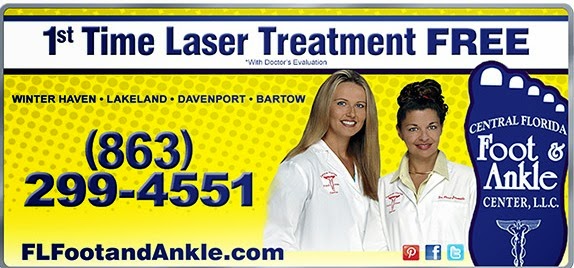Equinus is a condition of the foot and ankle that refers to
a tight Achilles tendon. The Achilles
tendon is composed of the tendons of two muscles – the gastrocnemius and the
soleus. Together, these two muscles form
the strongest tendon in the entire body, which inserts into the calcaneus (heel
bone).
The Achilles tendon can become tight in one of several
ways. Spastic equinus is the oldest
recognized form of equinus, and is seen as a result of upper motor neuron
disease. This may include cerebral
palsy, stroke, or spinal trauma and disease.
Congenital equinus refers to equinus typically caused by a shortened
Achilles tendon, which is present at birth.
This may result in prolonged toe walking in the developing pediatric
patient.
Most commonly, equinus is an acquired deformity, due to a
tightness of the gastrocnemius muscle, the soleus, or both. This tightness develops over time, and can be
worsened by wearing high-heeled shoes, being casted for a lengthy period of
time, or from overuse without stretching.
Bony equinus can also present, which is a block of both that prevents
the ankle from dorsiflexing, or moving upwards.
Equinus is possibly the most common cause of foot pathology. When the Achilles tendon is tight, the body
compensates for this in order to bring the heel to the ground. This is often done by pronating at the
subtalar joint, which is the joint located just below the ankle. This extra pronation can lead to a number of
foot problems, such as plantar
fasciitis, flatfoot, tendintis, arthritis, bunions, hammertoes, ankle pain, and
a number of other conditions. Thus,
equinus is not necessarily a painful problem, but the compensation for it can
cause several painful problems.
Treatment of equinus should begin with an aggressive
stretching program to address the tightness of the Achilles tendon. Because of it’s relationship to the plantar
fascia, the two structures forming a type of sling around the calcaneus,
plantar fascia stretches are often incorporated as well. Combined with the use of orthotics to
maintain foot structure when walking, conservative treatment is often helpful
for those with equinus. Heel lifts may
also be used to address some of the compensation for equinus at the subtalar
joint, as it effectively lessens the amount of space that must be compensated
for.
Occassionally surgery may be necessary if the equinus is not
relieved with conservative measures, and is causing significant foot pathology. Surgery may involve lengthening of the
Achilles tendon itself, or lengthening of either the gastrocnemius muscle, the
soleus muscle, or both. These procedures
are often combined with foot procedures such as flatfoot or bunion correction,
as they are often indicated as the deforming force in a foot deformity.
Central Florida Foot & Ankle Center, LLC
101 6th Street N.W.
Winter Haven, FL 33881
Phone: 863-299-4551
www.FLFootandAnkle.com



No comments:
Post a Comment